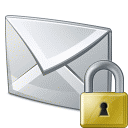Tuesday, February 16th, 2021
If you are having problems with message delivery, one of the first troubleshooting steps is to view the email headers. You can do this by viewing the message source. We will explain the basics, then teach you how to view headers in email for the most popular clients. These include Gmail, Apple Mail, Yahoo! Mail, Thunderbird, and Outlook.

Read the rest of this post »
Tags: AOL, classic, email headers, email message, entourage, eudora, evolution, gmail, headers, hotmail, internet headers, kde, kmail, mail.app, outlook, Outlook Express, pine, source, the bat!, thunderbird, webmail, windows live, yahoo!
Posted in LuxSci Library: The Technical Side of Email
7 Comments »
Tuesday, December 1st, 2020
 SSL and TLS play critical roles in securing data transmission over the internet, and AES-256 is integral in their most secure configurations. The original standard was known as Secure Sockets Layer (SSL). Although it was replaced by Transport Layer Security (TLS), many in the industry still refer to TLS by its predecessor’s acronym. While TLS can be relied on for securing information at a high level—such as US Government TOP SECRET data—improper or outdated implementations of the standard may not provide much security.
SSL and TLS play critical roles in securing data transmission over the internet, and AES-256 is integral in their most secure configurations. The original standard was known as Secure Sockets Layer (SSL). Although it was replaced by Transport Layer Security (TLS), many in the industry still refer to TLS by its predecessor’s acronym. While TLS can be relied on for securing information at a high level—such as US Government TOP SECRET data—improper or outdated implementations of the standard may not provide much security.
Variations in which cipher is used in TLS impact how secure TLS ultimately is. Some ciphers are fast but insecure, while others are slower, require a greater amount of computational resources, and can provide a higher degree of security. Weaker ciphers—such as the early export-grade ciphers—still exist, but they should no longer be used.
The Advanced Encryption Standard (AES) is an encryption specification that succeeded the Data Encryption Standard (DES). AES was standardized in 2001 after a five-year review and is currently one of the most popular algorithms used in symmetric-key cryptography. It is often seen as the gold standard symmetric-key encryption technique, with many security-conscious organizations requiring employees to use AES-256 for all communications. It is also used prominently in TLS.
Read the rest of this post »
Tags: 128-bit rc4, 256-bit AES, aes, apache, beast, chrome, cipher, encryption technique, fips, firefox, gpg, internet explorer, iphone, mail.app, opera, outlook, pgp, rc4, safari, secret, side channel attack, ssl, symmetric encryption, the beast, thunderbird, tls
Posted in LuxSci Library: Security and Privacy, Popular Posts
16 Comments »
Wednesday, May 27th, 2009
 We at LuxSci are always being asked questions about various email programs and their usage. With HIPAA compliance becoming more and more important, we get a lot of inquiries regarding secure email. One of the most frequently asked questions is how to install S/MIME security certificates in various email programs that our servers support. Sometimes finding instructions on installing security certificates in various email clients is difficult, even with the help of search engines. To make your search easier, we have complied instructions for several of the the major email clients:
We at LuxSci are always being asked questions about various email programs and their usage. With HIPAA compliance becoming more and more important, we get a lot of inquiries regarding secure email. One of the most frequently asked questions is how to install S/MIME security certificates in various email programs that our servers support. Sometimes finding instructions on installing security certificates in various email clients is difficult, even with the help of search engines. To make your search easier, we have complied instructions for several of the the major email clients:
- S/MIME for Outlook 2003
- S/MIME for Outlook 2007
- S/MIME for Mail.app
- S/MIME for Entourage
- S/MIME for Thunderbird
- PGP for Thunderbird via the Enigmail Add-on.
Read the rest of this post »
Tags: add-on, apple, cacert.pem, certificate, certificate authority, encrypt, enigmail, entourage, import, install, keychain, mail.app, openpgp, outlook, pgp, pgp certificate, s/mime, s/mime certificate, thunderbird
Posted in LuxSci Library: Email Programs and Devices
3 Comments »


 SSL and TLS play critical roles in securing data transmission over the internet, and AES-256 is integral in their most secure configurations. The original standard was known as Secure Sockets Layer (SSL). Although it was replaced by Transport Layer Security (TLS), many in the industry still refer to TLS by its predecessor’s acronym. While TLS can be relied on for securing information at a high level—such as US Government TOP SECRET data—improper or outdated implementations of the standard may not provide much security.
SSL and TLS play critical roles in securing data transmission over the internet, and AES-256 is integral in their most secure configurations. The original standard was known as Secure Sockets Layer (SSL). Although it was replaced by Transport Layer Security (TLS), many in the industry still refer to TLS by its predecessor’s acronym. While TLS can be relied on for securing information at a high level—such as US Government TOP SECRET data—improper or outdated implementations of the standard may not provide much security.


